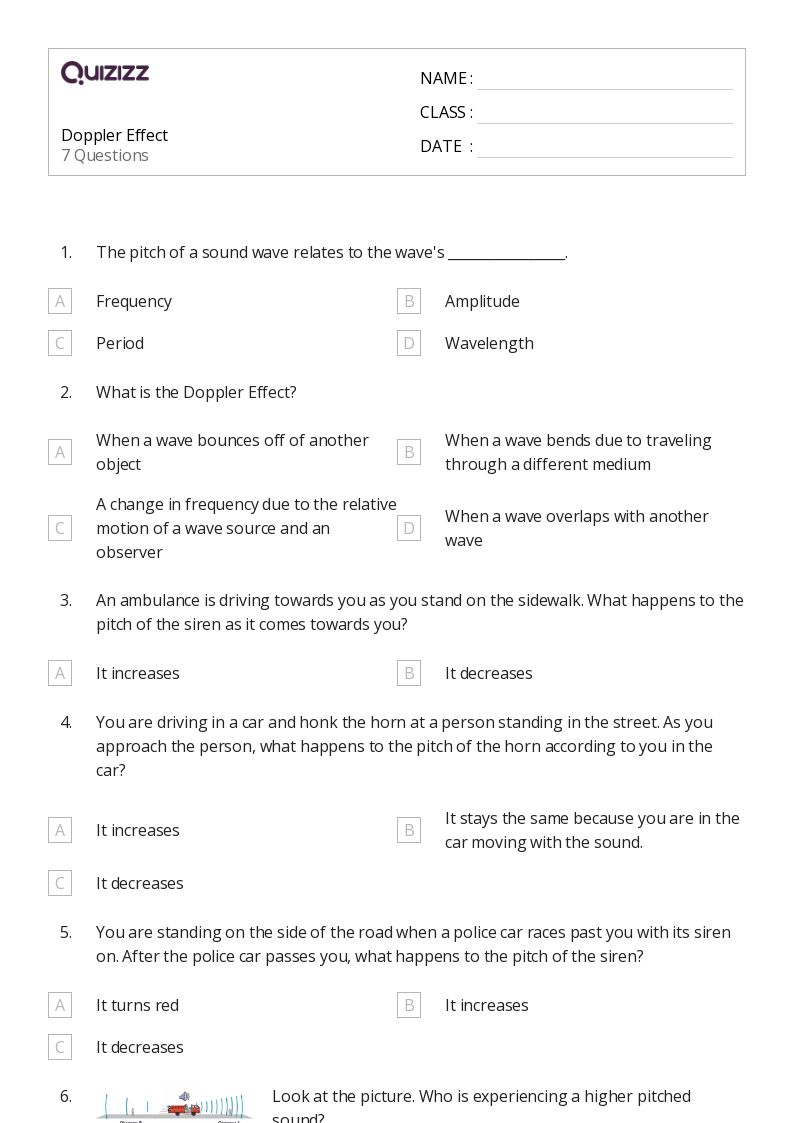Doppler Effect Worksheet Answers
Doppler Effect Worksheet Answers - Doppler effect is the change in frequency (or pitch) of the sound detected by a listener because the sound source and the listener have different velocities relative to the medium of sound propagation. Suppose that a 129 hz buzzer is attached to a baseball that is thrown at 31.3 m/s. Use 342 m/s for the speed of sound. After the re engine passes, now what frequency do you hear? Doppler effect and the velocity of the source time: These worksheets provide a variety of engaging activities and exercises designed to help students grasp the principles behind the doppler effect, such as the change in frequency and wavelength of a wave in relation to an observer who is moving relative to the wave source. When the automobile moves away from the listener, its horn seems.
Use the hint buttons to assist you in answering these questions. The black dot represents the source of the sound wave and travels with a speed set by the slider. Advanced physics questions and answers worksheet for exploration 18.4: This effect is readily observable as variation in the pitch of sound between
When an automobile moves towards a listener, the sound of its horn seems relatively. This makes light waves move toward the blue spectrum. When the automobile moves away from the listener, its horn seems. What frequency would a stationary person hear while waiting to catch the incoming ball? What frequency do you hear as the re engine approaches you? Is the doppler shift real or just a sensory illusion?
Advanced physics questions and answers worksheet for exploration 18.4: Suppose that a 129 hz buzzer is attached to a baseball that is thrown at 31.3 m/s. At which point does the sound have a lower pitch? Get help with your doppler effect homework. Use 342 m/s for the speed of sound.
Feel free to view correct answers as often as you need always remembering to try and make your first answers as accurate as possible. The changed pitch of the doppler effect is due to changes in. The doppler effect causes the received frequency of a source (how it is perceived when it gets to its destination) to differ from the sent frequency if there is motion that is increasing or decreasing the distance between the source and the receiver. At which point are the sound waves more crowded together?
At Which Point Does The Sound Have A Lower Pitch?
Here, you can solve some problems related to the doppler effect in college physics. If a star is moving away, the light Answer the following questions based on the passage and diagram. What is the frequency heard by a person driving at 15 m/sec toward a blowing factory whistle (f = 800 hz) if the speed of sound is 340.6 m/sec?
This Makes Light Waves Move Toward The Blue Spectrum.
Answer the following questions based on the passage and diagram. When the automobile moves away from the listener, its horn seems. Get help with your doppler effect homework. The black dot represents the source of the sound wave and travels with a speed set by the slider.
The Changed Pitch Of The Doppler Effect Is Due To Changes In.
The changed pitch of the doppler effect is due to changes in. Is the doppler shift real or just a sensory illusion? This makes light waves move toward the blue spectrum. Questions are stepped in difficulty throughout each section.
Use 342 M/S For The Speed Of Sound.
If the star is coming closer, the light waves are compressed (pushed) together. Page directions the numerical values in this worksheet are randomly generated allowing students the opportunity to conveniently practice, and. On this worksheet you may assume that the speed of sound in air is 340 m/sec unless otherwise stated. At which point are the sound waves more crowded together?
Questions with answers for the doppler effect in sound and light (em) waves. Here, you can solve some problems related to the doppler effect in college physics. An emergency worker is driving at 32 m/s toward the source of. The black dot represents the source of the sound wave and travels with a speed set by the slider. Use 342 m/s for the speed of sound.






